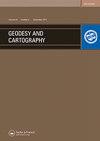使用机器学习生成土壤数据集和土壤pH值的高分辨率土壤可蚀性k因子估计
IF 2.1
Q3 REMOTE SENSING
引用次数: 1
摘要
本文章由计算机程序翻译,如有差异,请以英文原文为准。
High-resolution soil erodibility K-factor estimation using machine learning generated soil dataset and soil pH levels
: Soil Erodibility Factor (K-factor) is a crucial component of a widely used equation for soil erosion assessment known as the USLE (Universal Soil Loss Equation) or its revised version – RUSLE. It reflects the potential of the soil of being detached due to rain-falls or runoffs. So far, an extensive number of researches provide different approaches and techniques in the evaluation of K-factor. This study applies soil erodibility estimation in the soils of the South Caucasian region using soil data prepared by the International Soil Reference and Information Centre (ISRIC) with 250 m resolution, whereas the recent K-factor estimation implemented in the EU scale was with 500 m resolution. Soil erodibility was assessed using an equation involving soil pH levels. The study utilises Trapesoidal equation of soil data processing and preparation, as suggested by ISRIC, for various layers of surface soil data with up to 0-30 cm depth. Both usage of SoilGrids data and its processing as well as estimation of K-factor applying soil pH levels have demonstrated sufficient capacity and accuracy in soil erodibility assessment. The final output result has revealed the K-factor values varying from 0.037 and more than 0.060 t ha h/MJ mm within the study area.
求助全文
通过发布文献求助,成功后即可免费获取论文全文。
去求助
来源期刊

Geodesy and Cartography
REMOTE SENSING-
CiteScore
1.50
自引率
0.00%
发文量
0
审稿时长
15 weeks
期刊介绍:
THE JOURNAL IS DESIGNED FOR PUBLISHING PAPERS CONCERNING THE FOLLOWING FIELDS OF RESEARCH: •study, establishment and improvement of the geodesy and mapping technologies, •establishing and improving the geodetic networks, •theoretical and practical principles of developing standards for geodetic measurements, •mathematical treatment of the geodetic and photogrammetric measurements, •controlling and application of the permanent GPS stations, •study and measurements of Earth’s figure and parameters of the gravity field, •study and development the geoid models,
 求助内容:
求助内容: 应助结果提醒方式:
应助结果提醒方式:


